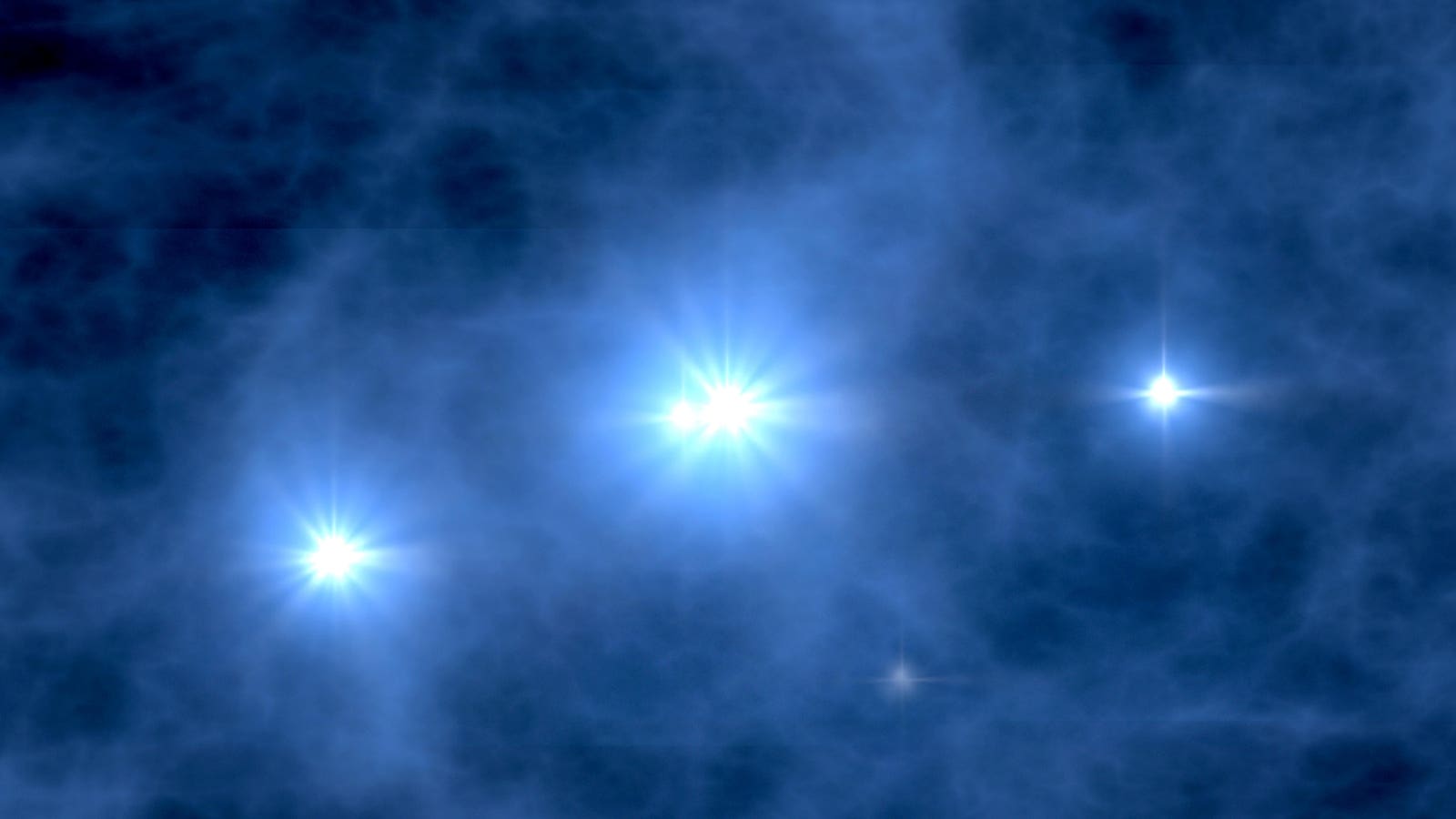Artist’s impression of the first stars, 400 million years after the Big Bang
Astronomers have discovered the furthest known carbon in the universe, dating from just 350 million years after the Big Bang. The finding – made by NASA’s Webb Space Telescope – used infrared observations from the current Advanced Deep Extragalactic Survey to identify carbon in a baby galaxy that formed not long after the dawn of time.
The findings are likely to force cosmologists and theorists to reconsider much of everything they know about the chemical enrichment of our cosmos.
In a paper accepted for publication in the journal Astronomy and astrophysics, an international team led by astronomers from the University of Cambridge in Britain, describes their observations of this early galaxy, known as GS-z12. It is at a redshift of more than 12, near cosmic dawn.
This is not only the earliest confirmed detection of carbon, but also the first confirmed detection of any chemical element other than primordial elements produced by the Big Bang (hydrogen, helium and trace amounts of lithium), according to Francesco D’Eugenio, the paper’s lead author . and an astrophysicist at the University of Cambridge, told me via email.
Finding this carbon so early in cosmic history could also mean that somewhere out there, life may have started even earlier than once expected.
This discovery also challenges our models of chemical evolution, says D’Eugenio. We didn’t expect to encounter such a large amount of carbon-oxygen until much later in the history of the universe, he says. Therefore, our discovery points to new and unexpected chemical enrichment channels in the early universe, says D’Eugenio.
Due to the extraordinary faintness of such distant galaxies, the team was only able to detect the carbon after about 65 hours of observation using near-infrared spectroscopy.
Astronomers use spectroscopy to study the absorption and emission of light and other radiation by matter. Each element has its own chemical fingerprint visible in the spectra of a celestial body, which in this case allowed the surprising identification of carbon at such early times.
How did this carbon form?
The Big Bang produced only hydrogen, helium and trace amounts of lithium, D’Eugenio says. Therefore, this carbon – and all carbon in the universe – must have been produced in stars, he says. Some of the carbon is produced in massive, short-lived stars, and some in long-lived, low-mass stars, D’Eugenio says.
Carbon via supernovae
In GS-z12, which has only about 50 million solar masses, we can rule out the second scenario, because the universe was so young that low-mass stars did not have enough time to contribute significant amounts of carbon, says D’Eugenio . This implies that it was produced in massive stars, he says. However, the carbon-to-oxygen ratio we see in GS-z12 doesn’t match the products of known massive stars, D’Eugenio says. Therefore, we suspect that this detected carbon may have been produced in more exotic types of massive stars, such as Population III stars, he says.
Population III stars are a theoretical population of the very first stars in the universe.
Some models suggest that when these earliest stars exploded as supernovae, they may have released less energy than initially expected, notes the University of Cambridge. In this case, carbon, which was in the stars’ outer shells and was less gravitationally bound than oxygen, the university says. This carbon could therefore have more easily escaped and spread through the galaxy, while a large amount of oxygen fell back and collapsed into a black hole, the university reports.
Could this carbon be the result of a Population III star going supernova?
We don’t know for sure what kind of star produced this carbon, D’Eugenio says. But because of the truly short time available for stellar evolution, it must have arisen from supernova explosions caused by the death of massive stars, D’Eugenio says. Evidence ranging from the local universe up to a billion years after the Big Bang shows that the carbon-to-oxygen ratio produced by supernovae is much lower than what we observe in this galaxy, he says.
Carbon-oxygen ratios
Explaining the high carbon-to-oxygen ratio observed in GS-z12 is difficult in the current framework, D’Eugenio says. In this context, there are some theoretical scenarios in which Population III supernovae yield high carbon-to-oxygen ratios; this would be a suitable scenario, but it needs to be confirmed, he says.
James Webb Space Telescope looks at galaxies. These images were provided by NASA … [+]
As for the carbon detected?
It was produced in one of the inner helium-burning shells of a massive star as it was about to become a supernova, D’Eugenio says. When the star went supernova, the carbon-enriched gas returned to the galaxy, he says.
And then it became detectable.
Such early supernovae and their byproducts represent the first steps in cosmic chemical enrichment. After billions of years, this chemical evolution resulted in a group of galaxies like our Milky Way; chemically rich and – at least on this planet – teeming with carbon-based life.
